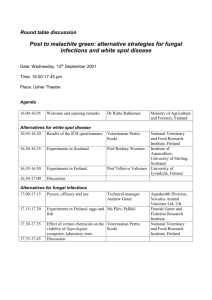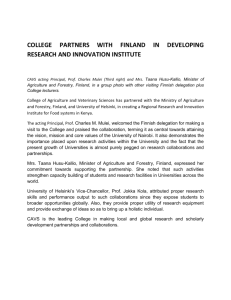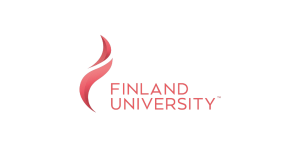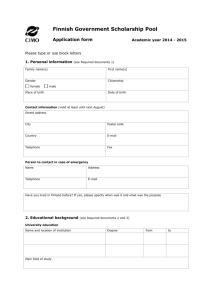Finland – a country in the northern Europe
advertisement
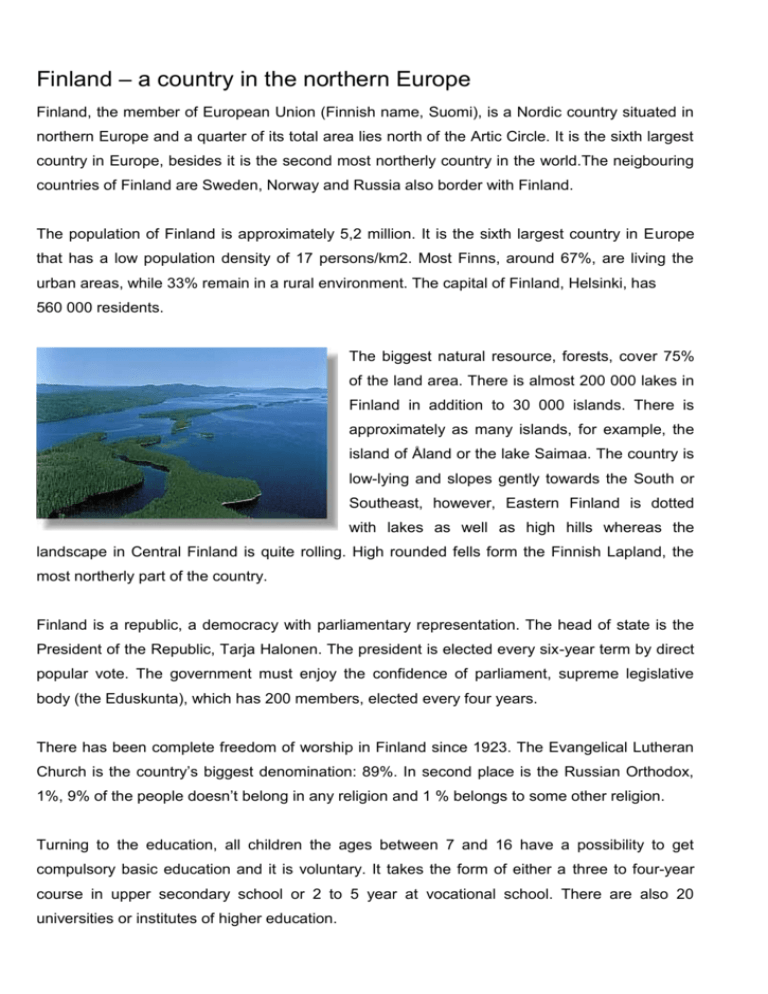
Finland – a country in the northern Europe Finland, the member of European Union (Finnish name, Suomi), is a Nordic country situated in northern Europe and a quarter of its total area lies north of the Artic Circle. It is the sixth largest country in Europe, besides it is the second most northerly country in the world.The neigbouring countries of Finland are Sweden, Norway and Russia also border with Finland. The population of Finland is approximately 5,2 million. It is the sixth largest country in Europe that has a low population density of 17 persons/km2. Most Finns, around 67%, are living the urban areas, while 33% remain in a rural environment. The capital of Finland, Helsinki, has 560 000 residents. The biggest natural resource, forests, cover 75% of the land area. There is almost 200 000 lakes in Finland in addition to 30 000 islands. There is approximately as many islands, for example, the island of Åland or the lake Saimaa. The country is low-lying and slopes gently towards the South or Southeast, however, Eastern Finland is dotted with lakes as well as high hills whereas the landscape in Central Finland is quite rolling. High rounded fells form the Finnish Lapland, the most northerly part of the country. Finland is a republic, a democracy with parliamentary representation. The head of state is the President of the Republic, Tarja Halonen. The president is elected every six-year term by direct popular vote. The government must enjoy the confidence of parliament, supreme legislative body (the Eduskunta), which has 200 members, elected every four years. There has been complete freedom of worship in Finland since 1923. The Evangelical Lutheran Church is the country’s biggest denomination: 89%. In second place is the Russian Orthodox, 1%, 9% of the people doesn’t belong in any religion and 1 % belongs to some other religion. Turning to the education, all children the ages between 7 and 16 have a possibility to get compulsory basic education and it is voluntary. It takes the form of either a three to four-year course in upper secondary school or 2 to 5 year at vocational school. There are also 20 universities or institutes of higher education. Finland has two official languages: Finnish and Swedish. Swedish is spoken by 6% of population. In addition to Finnish and Swedish, about 2000 people in Lapland speak the Sami language. So, the literacy level in Finland is virtually 100%. Furthermore, Finland has an advanced industrial economy: forests are the crucial raw material resource, although the engineering and high technology industries, led by Nokia, have long been the leading branches on manufacturing. To sum up briefly, even though Finland is aside from other countries, it is a modern welfare state. The living standard is high and everyone has equal rights to have different kinds of services, for instance, education. It is also very beautiful with its large forests and shimmering lakes. It is very good place to live. Sources: http//:virtual.finland.fi http://www.cia.gov/cia/publications/factbook/geos/fi.html http://finland.cimo.fi/



